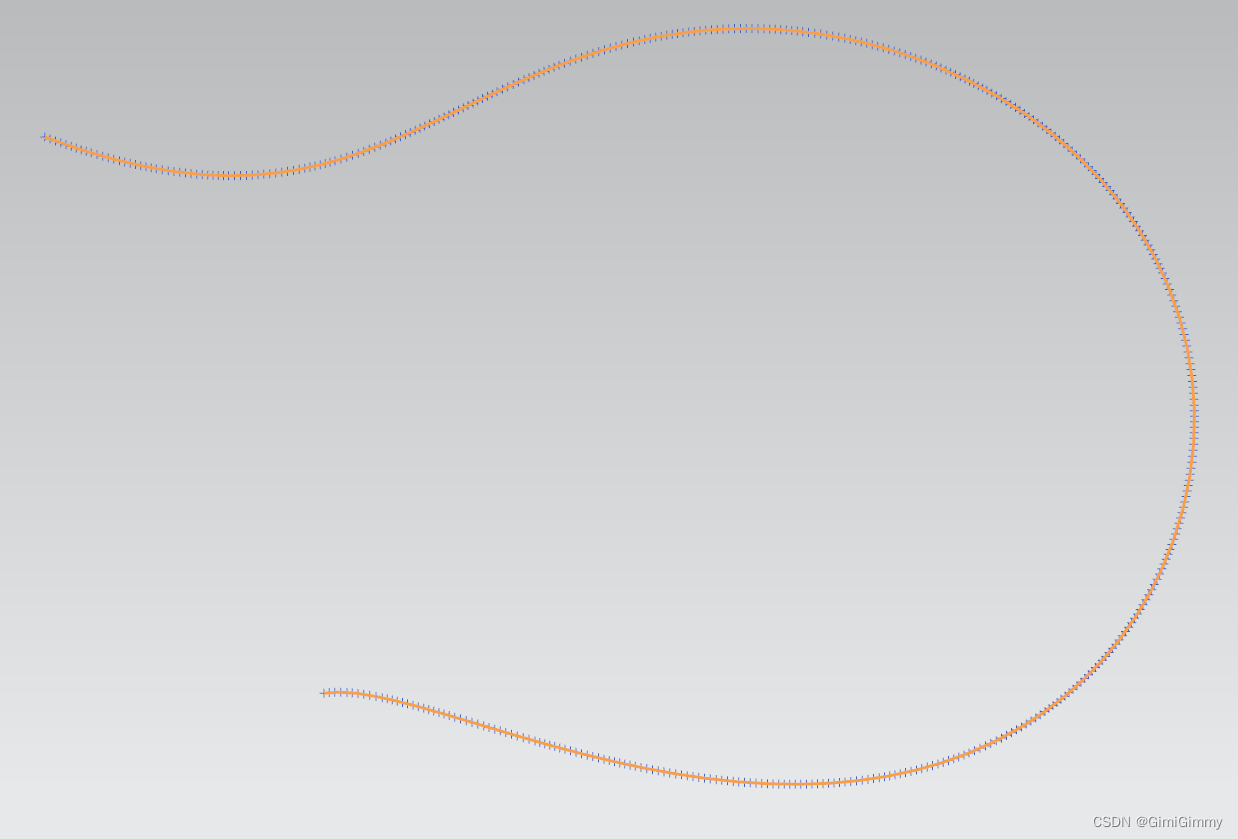UG NX二次开发(C++)- 建模 - 获取曲线的离散点

文章目录
- 1、前言
- 2、UF_MODL_ask_curve_points函数说明
- 3、UF_MODL_ask_curve_points使用例子
- 4、UF_MODL_ask_curve_points实现演示
1、前言
在UG NX中,获取曲线上的点有几种方式,其中一种是获取离散点,按照弦长误差、角度误差、步长三种之一的方式获取。采用的函数是UF_MODL_ask_curve_points,本文讲一下这个函数的使用。
2、UF_MODL_ask_curve_points函数说明
UF_MODL_ask_curve_points的函数说明如下图所示:
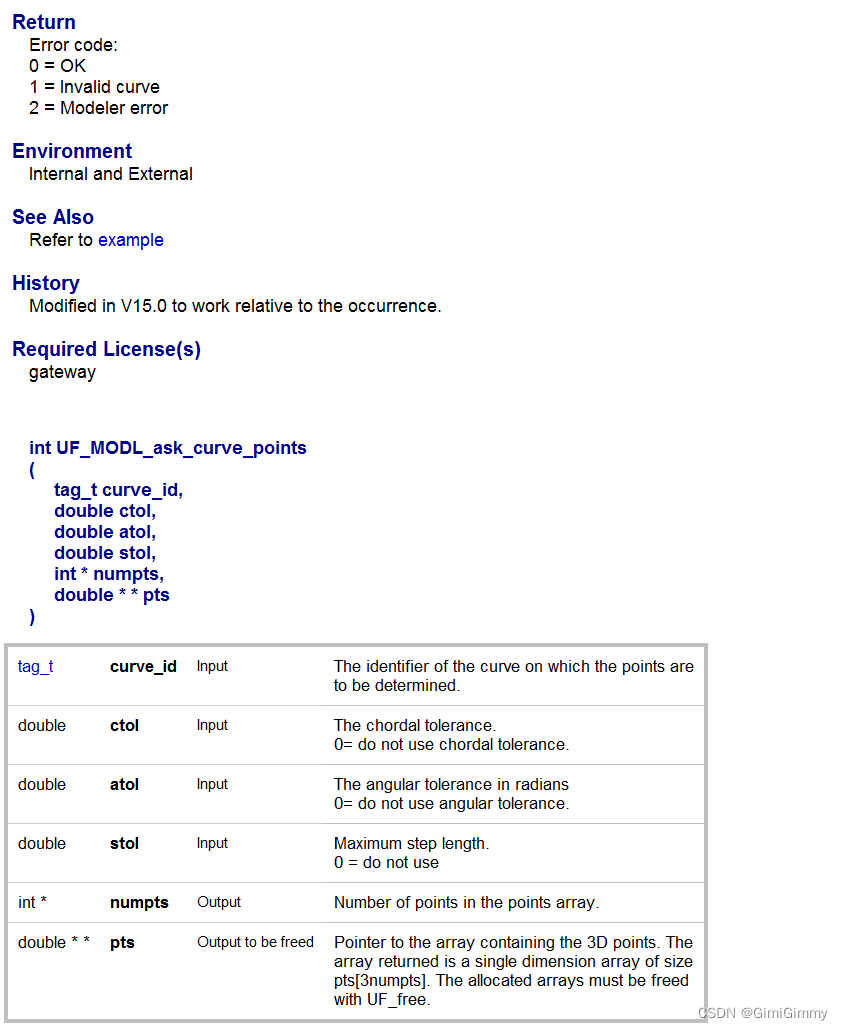
其输入参数为:
- tag_t curve_id–曲线的标识
- ctol --弦长误差,如果是0则不用这个
- atol–角度误差,如果是0则不用这个
- stol–最大步长值,如果是0则不用这个
- int *numpts–输出离散点的数目
- double pts 输出点的坐标
如果离散曲线是正确的,则函数返回值是0;如果曲线无效,则返回1;如果模型错误,则返回2
3、UF_MODL_ask_curve_points使用例子
按照UG NX帮助文档给的例子为:
/Copyright (c) 1999 Unigraphics Solutions, Inc.Unpublished - All Rights Reserved*/
/*The following example uses a semi-circle as the input curve. The ctol
and stol parameters were chosen so that five coordinates (located at 0,
45, 90, 135, and 180 degrees on the arc) are outputted.*/#include <uf.h>
#include <uf_modl.h>
#include <uf_curve.h>
#include <uf_csys.h>
#include <uf_obj.h>
#include <stdio.h>
#define UF_CALL(X) (report( __FILE__, __LINE__, #X, (X)))
static int report( char *file, int line, char *call, int irc)
{if (irc){char messg[133];printf("%s, line %d: %s\\n", file, line, call);(UF_get_fail_message(irc, messg)) ?printf(" returned a %d\\n", irc) :printf(" returned error %d: %s\\n", irc, messg);}return(irc);
}
static void do_ugopen_api(void)
{double ctol = 0.07612046748871;double atol = 0.0;double stol = 0.76536686473018;double *pts;int numpts, i;tag_t arc, wcs_tag;UF_CURVE_arc_t arc_coords;UF_CALL(UF_CSYS_ask_wcs(&wcs_tag));UF_CALL(UF_CSYS_ask_matrix_of_object(wcs_tag,&arc_coords.matrix_tag));arc_coords.start_angle = 0.0;arc_coords.end_angle = PI;arc_coords.arc_center[0] = 0.0;arc_coords.arc_center[1] = 0.0;arc_coords.arc_center[2] = 0.0;arc_coords.radius = 1.0;UF_CALL(UF_CURVE_create_arc(&arc_coords, &arc));if(UF_CALL(UF_MODL_ask_curve_points(arc,ctol,atol,stol,&numpts, &pts))){/* Print the error message from UF_CALL macro */}else{printf("The number of points are: %d\\n",numpts);for(i = 0; i < 3 * numpts; i++)printf("The points are: %f\\n",pts[i]);}UF_free(pts);
}
/*ARGSUSED*/
void ufusr(char *param, int *retcode, int param_len)
{if (!UF_CALL(UF_initialize())){do_ugopen_api();UF_CALL(UF_terminate());}
}
int ufusr_ask_unload(void)
{return (UF_UNLOAD_IMMEDIATELY);
}这个例子是实现创建一段圆弧,并获取圆弧上的离散点。
4、UF_MODL_ask_curve_points实现演示
我们在UG NX中创建一条曲线,可以是圆弧,也可以是样条曲线,我们以样条曲线为例,如下图所示。
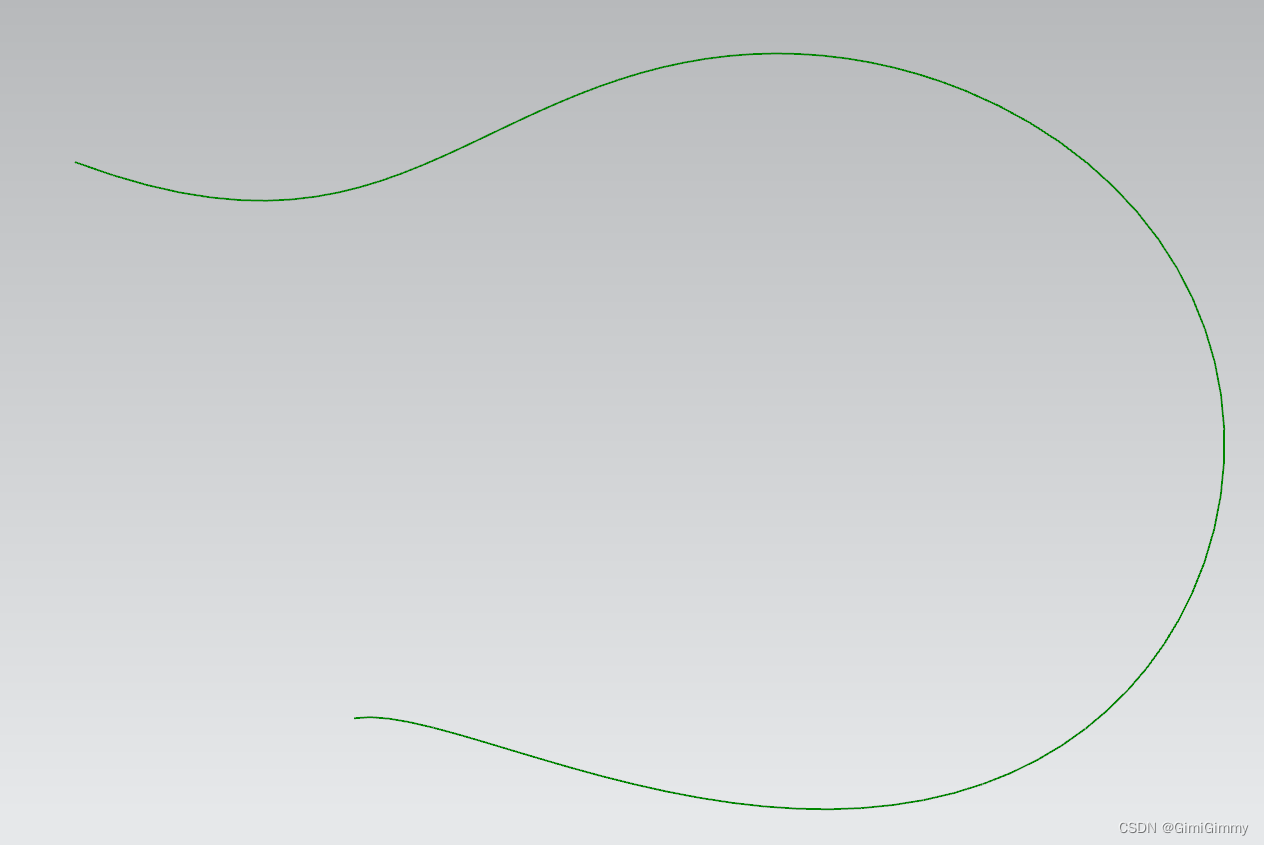
根据弦长误差获取这个样条曲线上的离散点,弦长误差为0.01;
代码修改为:
double ctol = 0.01;double atol = 0.0;double stol = 0.0;double *pts;int numpts;if (UF_CALL(UF_MODL_ask_curve_points(object, ctol, atol, stol,&numpts, &pts))) //object是样条曲线的标识{}else{char st[133];sprintf(st, "离散点数据是为:%d", numpts);uc1601(st, 0);}
其获取的点集为:
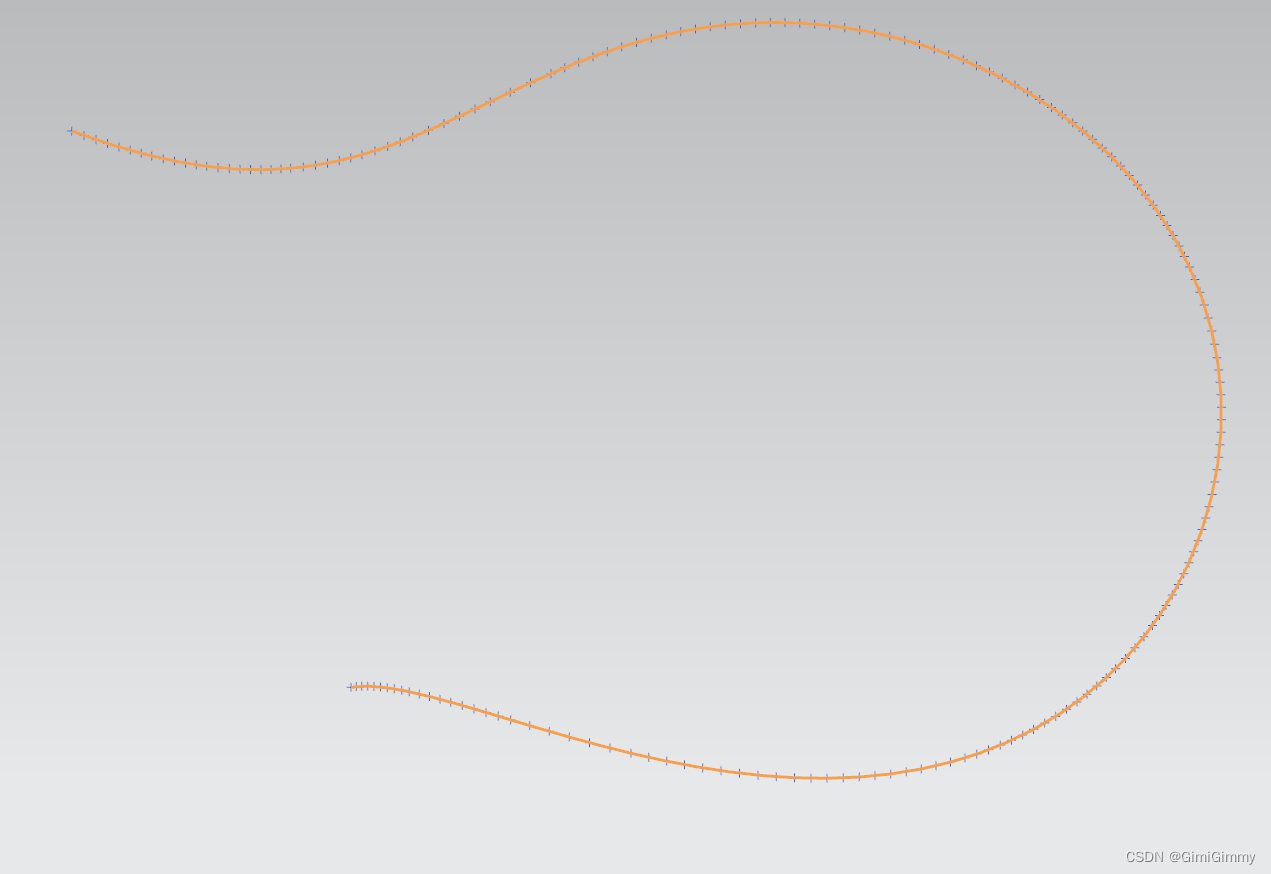
根据角度误差获取这个样条曲线上的离散点,角度误差为0.01;
代码修改为:
double ctol = 0.00;double atol = 0.01;double stol = 0.0;double *pts;int numpts;if (UF_CALL(UF_MODL_ask_curve_points(object, ctol, atol, stol,&numpts, &pts))) //object是样条曲线的标识{}else{char st[133];sprintf(st, "离散点数据是为:%d", numpts);uc1601(st, 0);}
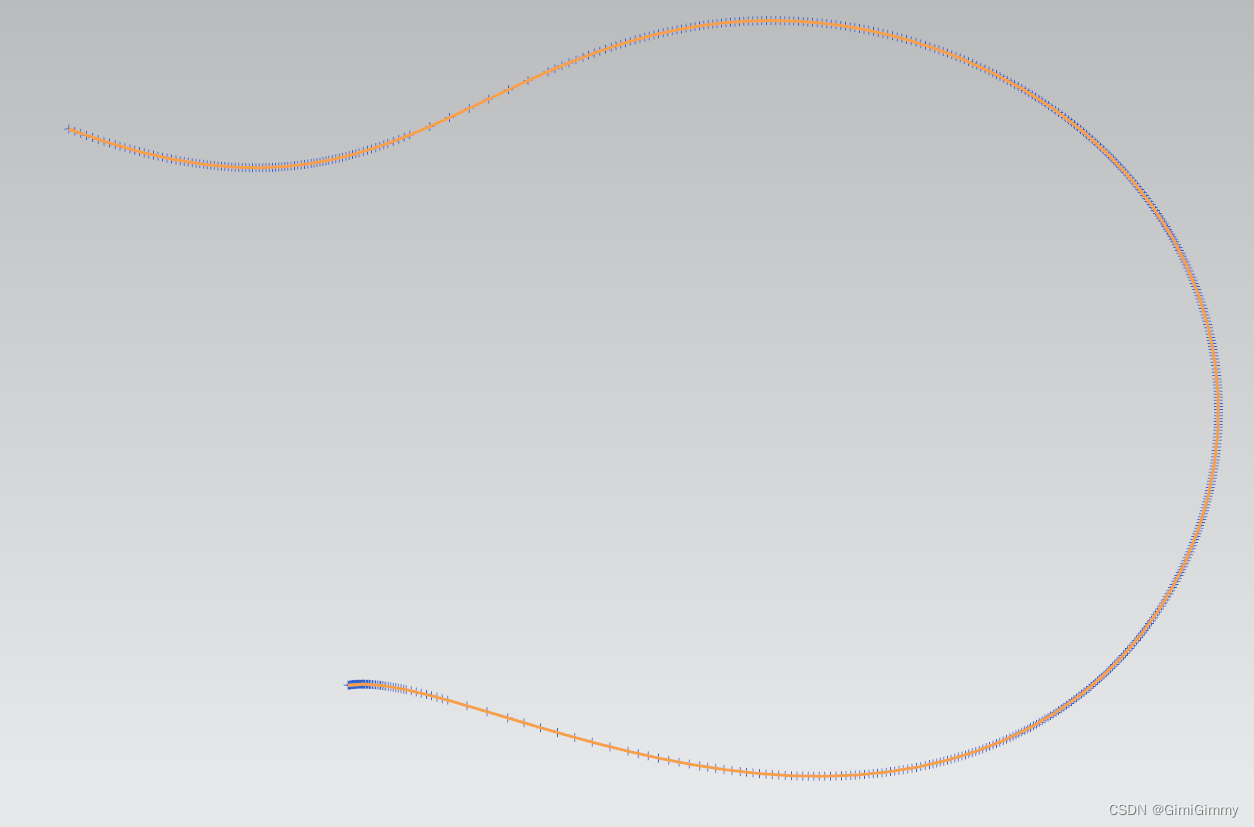
根据最大步长获取这个样条曲线上的离散点,最大步长为1;
代码修改为:
double ctol = 0.00;double atol = 0.00;double stol = 1.0;double *pts;int numpts;if (UF_CALL(UF_MODL_ask_curve_points(object, ctol, atol, stol,&numpts, &pts))) //object是样条曲线的标识{}else{char st[133];sprintf(st, "离散点数据是为:%d", numpts);uc1601(st, 0);}
